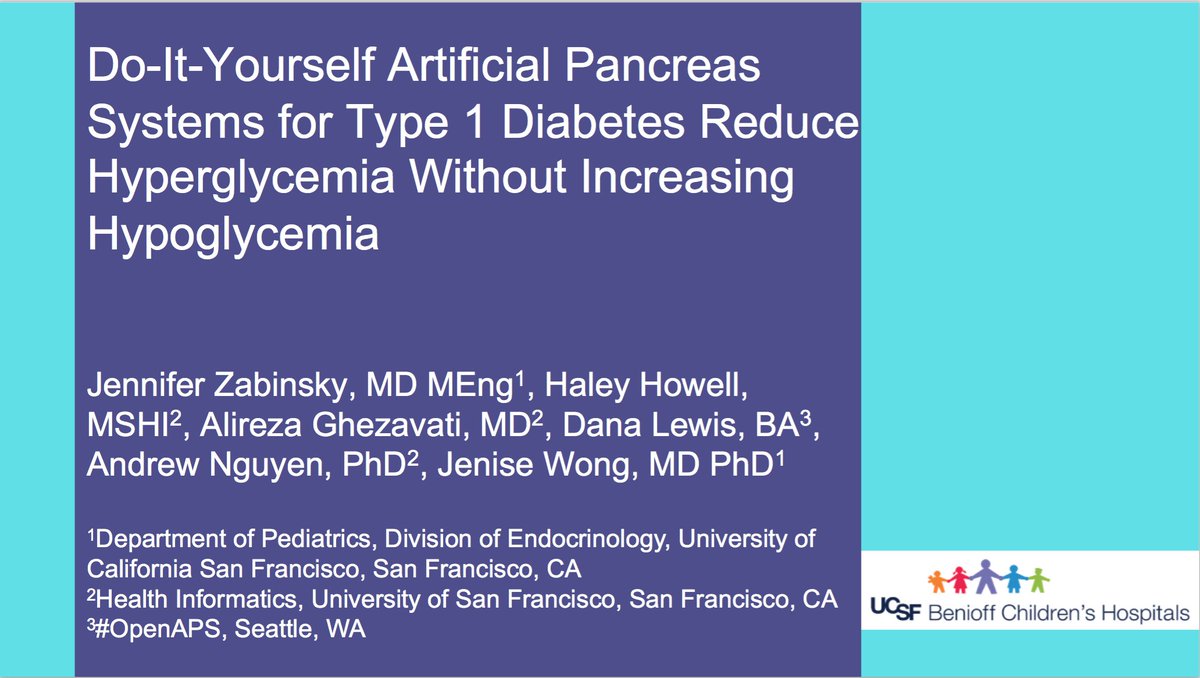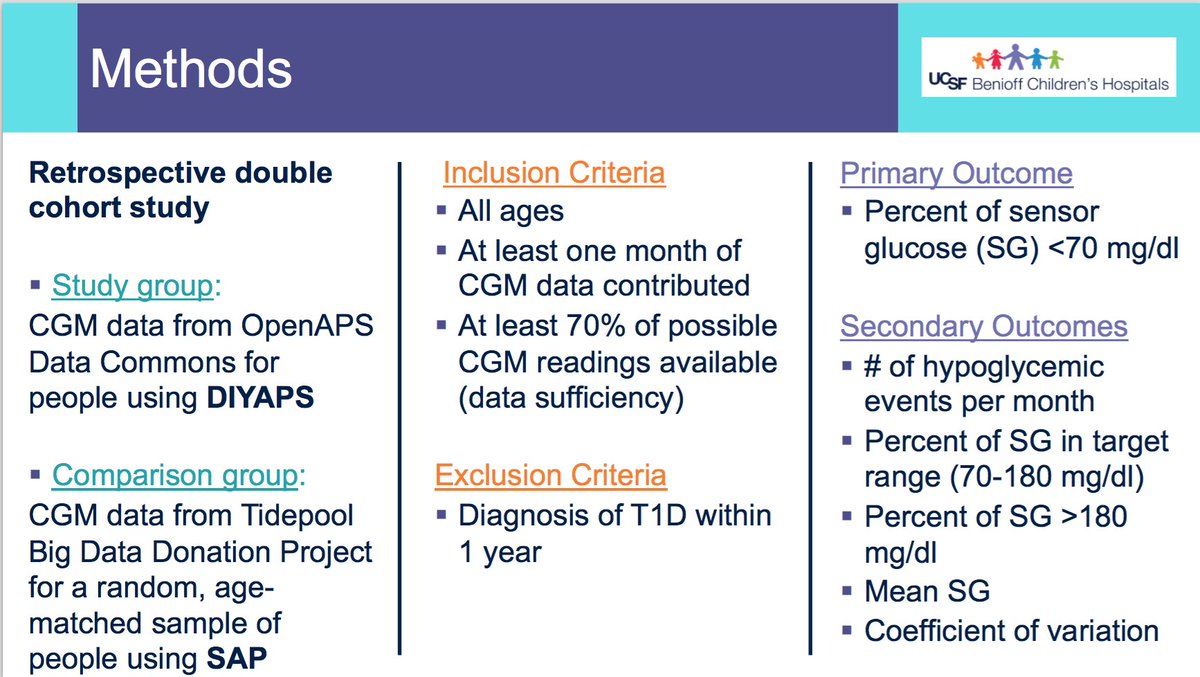Here is a Twitter thread from poster 78-LB at #ADA2019, Detailing the Lived Experiences of People with Diabetes Using Do-it-Yourself Artificial Pancreas Systems - Qualitative Analysis of Responses to Open-Ended Items in an International Survey. 

Introduction:
There is currently a wave of interest in Do-it-Yourself Artificial Pancreas Systems (DIYAPS), but knowledge about how the use of these systems impacts on the lives of those that build and use them remains limited. #ADA2019
There is currently a wave of interest in Do-it-Yourself Artificial Pancreas Systems (DIYAPS), but knowledge about how the use of these systems impacts on the lives of those that build and use them remains limited. #ADA2019
Until now, only a select few have been able to give voice to their experiences in a research context. In this study we present data that addresses this shortcoming, detailing the lived experiences of people using DIYAPS in an extensive and diverse way. #ADA2019
Methods:
An online survey with 34 items was distributed to DIYAPS users recruited through the Facebook groups “Looped” (and regional sub-groups) and Twitter pages of the Diabetes Online Community (DOC). #ADA2019
An online survey with 34 items was distributed to DIYAPS users recruited through the Facebook groups “Looped” (and regional sub-groups) and Twitter pages of the Diabetes Online Community (DOC). #ADA2019
2 open-ended Qs were posed, garnering personal DIYAPS stories; including knowledge acquisition, decision-making, support & emotional aspects in DIYAPS initiation, perceived changes in clinical & quality of life (QoL) outcomes after initiation, & difficulties encountered #ADA2019
Results
In total, 886 adults responded to the survey and there were a combined 656 responses to the two open-ended items. Knowledge of DIYAPS was primarily obtained via exposure to the communication fora that constitute the DOC. #ADA2019
In total, 886 adults responded to the survey and there were a combined 656 responses to the two open-ended items. Knowledge of DIYAPS was primarily obtained via exposure to the communication fora that constitute the DOC. #ADA2019
The DOC was also a primary source of practical and emotional support (QUOTES A). #ADA2019 

Dramatic improvements in clinical and QoL outcomes were consistently reported (QUOTES B). #ADA2019 

The emotional impact was overwhelmingly positive, with participants emphasizing that the persistent presence of diabetes in everyday life was markedly reduced (QUOTES C). #ADA2019 

Acquisition of the requisite devices to initiate DIYAPS was sometimes problematic and some people did find building the systems to be technically challenging (QUOTE D). #ADA2019 

Overcoming these challenges did, however, leave people with a sense of accomplishment and, in some cases, improved levels of understanding and engagement with diabetes management (QUOTE E). #ADA2019 

#ADA2019 Also, see this word cloud generated from 665 responses in the two open-ended questions in the survey: 

Conclusion
Extensive responses from users of DIYAPS provides new insights, highlighting factors inspiring people to adopt such solutions and underlining transformative impact effective closed-loop systems bring to bear on the everyday lives of people with diabetes. #ADA2019
Extensive responses from users of DIYAPS provides new insights, highlighting factors inspiring people to adopt such solutions and underlining transformative impact effective closed-loop systems bring to bear on the everyday lives of people with diabetes. #ADA2019
There is much to learn from those who have taken this route, and life-changing results they have achieved should inspire all with an interest in APS to pursue and dream of a future where all people with type 1 diabetes can reap the benefits that it potentially provides. #ADA2019
(You can find a longer form copy of this poster content, and all other posters co-authored by @danamlewis at bit.ly/DanaMLewisADA2…)
• • •
Missing some Tweet in this thread? You can try to
force a refresh










